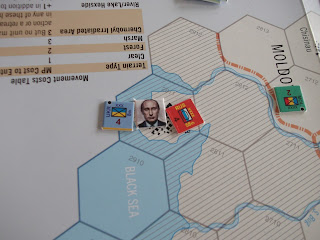For the first time in years there are two competing and different visions of the future on offer to the British electorate. On the one hand, we have the Conservative Party, who offer a vision of a country where people who work hard can enjoy the fruits of their labour. This is a vision of a small state, with low taxation and low levels of public spending, where fiscal discipline is enforced by austerity politics. On the other hand, there is the vision of the Labour Party, which starts at the point of markets failing to deliver a fair outcome and needing corrective measures to ensure a fairer society. It is a vision of an expanded fiscal policy with greater roles for state intervention. The Conservative criticism of Labour policy is that there isn't a magic money tree to pay for all of this. Is that quite true?
To answer this question, we need to go back to the financial crisis of 2007-08. Those were desperate years. The banking system was on the verge of collapse, the money supply was falling sharply as banks stopped lending to each other, and there was a real prospect of an acute depression in the real economy. Desperate times called for desperate measures. Two such measures were adopted that had a long term significance - the bail out of the banks and Quantitative Easing.
The banks were bailed out through the purchase of equity by UK Financial Investments Limited - an arms length holding company that manages the government holdings of RBS along with those of UK Asset Resolution Limited (the vehicle created to unwind the Northern Rock and Bradford & Bingley mortgage books). At present, UKFI holds 72.1% of the equity of RBS, which is worth about £23 billion at current market prices, and 100% of UKAR, which has an outstanding loan book of about £19 billion. In addition to that, the Bank of England intervened in the UK bond market to purchase £375 billion of gilt edged stock. This still sits on the Bank of England balance sheet. Together, there is well over £400 billion of liquid assets sitting in public sector balance sheets, almost literally doing nothing.
UKFI and the Bank of England are public sector bodies, subject to public accountability. If a Labour government is elected, then it would be within the realms of possibility that these bodies would be subject to political review. What could happen? It is entirely possible for an incoming Labour government to set up a National Investment Bank (NIB), which is a pledge under the current manifesto. It is entirely possible for a Labour Treasury to direct UKFI and the Bank of England to transfer their asset holdings into the NIB. It could also require the Student Loan Company to transfer into the NIB their £100 billion loan book. It would be entirely possible for the NIB to re-allocate those assets in different ways.
How could it be different? Take the issue of Private Finance Initiative (PFI) assets. These are assets such as schools and hospitals which are built by the private sector and leased for use by the public sector. They have a reputation for delivering poor value to the public purse. Labour has stated that it will issue no new PFI contracts during their term of office, and will seek to reclaim the assets of existing PFI contracts. It would be entirely possible for a Labour government to enact legislation that seeks to swap out the PFI assets held by private corporations for gilt edged stock held by the NIB. The capital value of PFI contracts is estimated at just over £60 billion, which ought to be a manageable sum for the NIB.
As we hear future discussion about Labour's spending proposals, the question of the magic money tree is bound to recur. From a purely financial stand point, it would be entirely appropriate for an incoming Labour government to swap around some of the assets in the public sector. It would also be appropriate for the NIB to fund additional capital assets - bridges, roads, schools, hospitals, prisons, the list is quite large. It could also fund the human capital of the country by reaching a different settlement for the education sector.
When the critics of Labour say that the money isn't there, that statement is untrue. It is there, but isn't currently being put to any good use.
Stephen Aguilar-Millan
© The European Futures Observatory 2017

